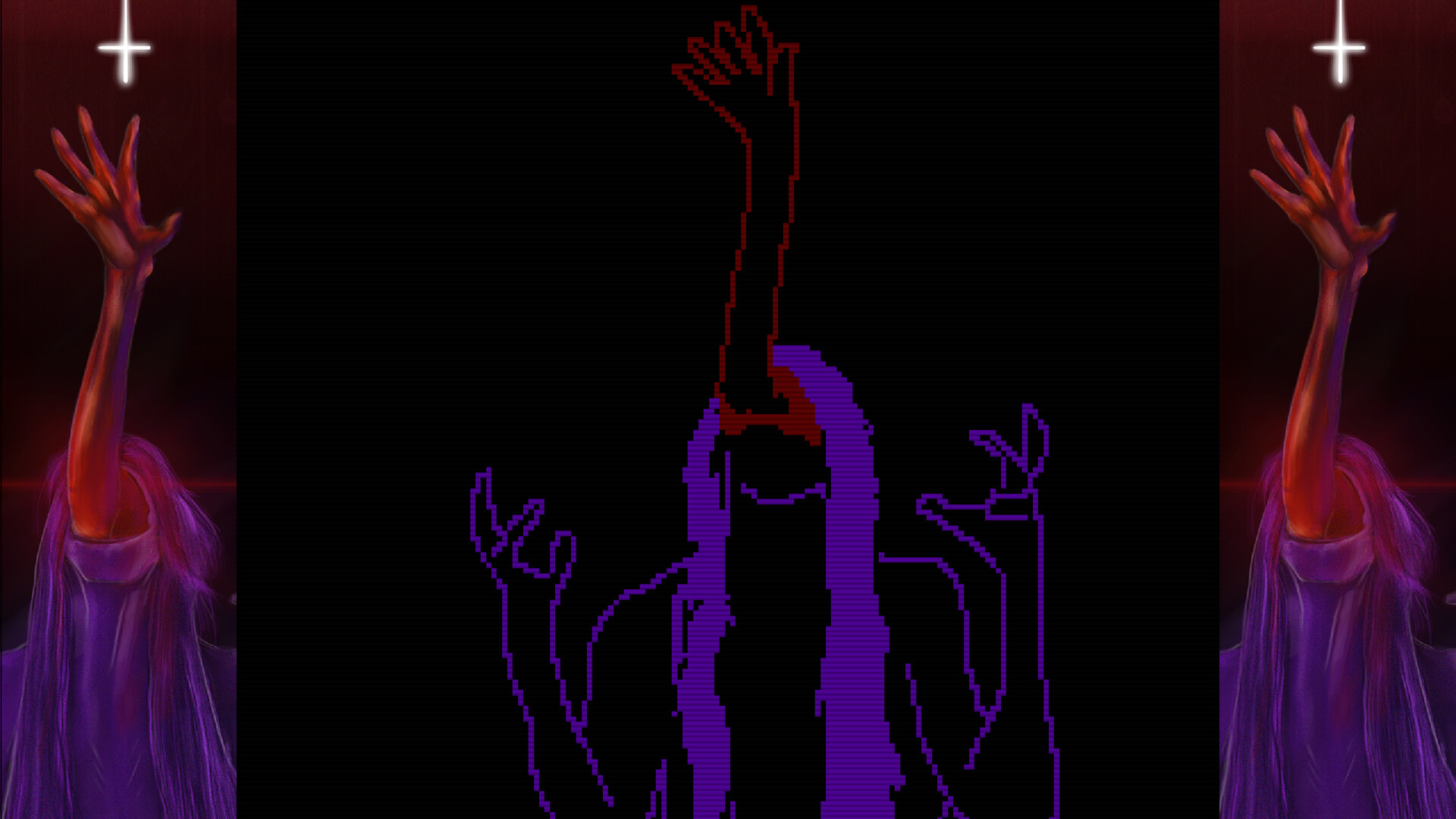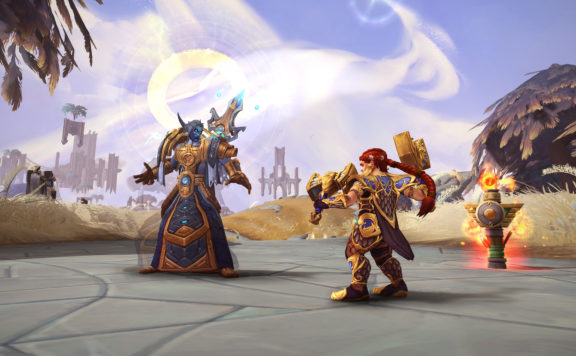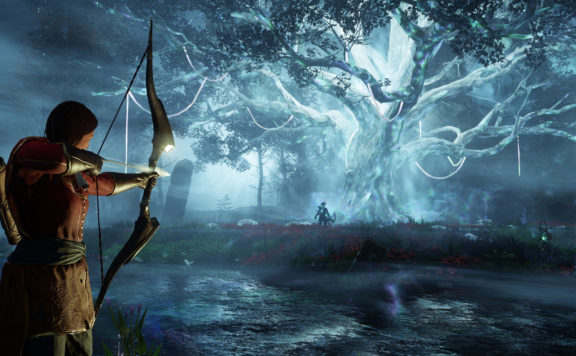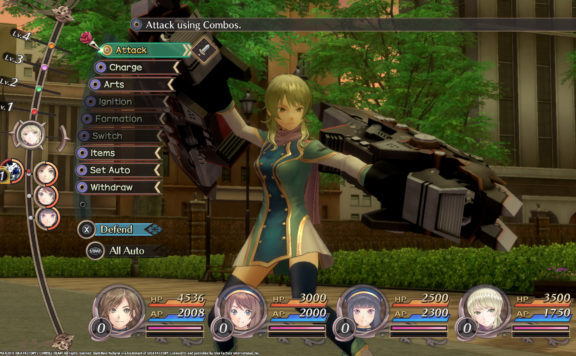After a horror movie spree with friends, I decided to pick something scary for the evening. FAITH: The Unholy Trinity from Airdorf Games was something that I heard a lot about but never got the chance to try out for myself.
The game was developed by a single person over the span of five years and at first I thought that it would be just another pixel horror, what could possibly be so scary about it? But… briefly looking ahead, it managed to scare and surprise and even show that some pixels are not quite like the others.
FAITH: The Unholy Trinity is a pixel horror inspired by the classic 8-bit games of the Atari era as well as the deep-rooted Satanism fear. Players take on the role of a young catholic priest John who must complete an exorcism, aided only by his faith, his cross… and Father Garcia’s trusty shotgun. On the way to our goal, we’ll meet cultists, demons, psychos and many nameless terrible things. However, our hero does not lose faith which we should also accept as his great strength.
However, I did not expect that the files of the game contain so much interesting additional materials, including the “Ritual” – one of the liturgical books of the Roman Catholic Church dedicated to the rituals and prayers for the exorcism of demons and possessions. There are even memes and a fully separate game, something like Vampire Survivors but in the style of Faith.
Altogether, the game consists of 3 chapters that tell a story of a priest, a failed exorcism, and an attempt to summon a Great Demon into our world by a number of cultists.
Gameplay-wise, the game puts players into extremely uncomfortable boundaries. Crawling with the speed of 80’s Internet connection, you can move in 8 directions and periodically raise your cross at demons, cultists, possessed and other bad guys. Meanwhile, your enemies will attempt to devour you or to sprint away or summon a rain of spiders (why must it always be spiders?) or even arrange a personal apocalypse for John.
Each time your character perishes, you will hear and see the same single word: “Mortis”. After all, the protagonist is not invulnerable, he is weaker than any cultist or demon out there and also a subject to evil influence that doesn’t even understand what is happening around him.
There is no increasing your level or modifying your abilities, what you started with is what you will have until the very end of the game. The only reward you might get from defeating your enemies is more information about what is going on, events, cultists, culture and more, shared via notes. This information will allow you to find out the truth so it is beneficial to get as much as you can.
Additionally, any note you pick up will also increase your damage done to the boss at the end of every chapter, so even speedrunners try to find as many as possible since, in the end, it will allow you to pass bosses faster and significantly less painfully.
The notes drop not only from enemies but also from cursed items that sometimes don’t look any different from their normal counterparts. Who would have thought that a tiny duck would be cursed? Others, however, are more obvious such as a bloodstained altar.

The game also offers a large number of puzzles. The kind that you first have to figure out how to find and approach, let alone solve. These puzzles can also be quite scary considering John’s limited capabilities. For example, in Chapter 3 you will have to lower your cross – John’s one and only weapon against demons – on a small elevator to another floor.
That will leave you completely defenseless and unarmed as you venture into the basement with the lights turned off. You can only orient yourself by the flashes of the camera, while the basement is filled with cultists and even a demon – Mister Elevator Friend.
Puzzles and riddles can reveal new information and even change the ending of the chapter. To get the secret ending in Chapter 3, you will have to solve all three secrets and then fight against a boss that has 3 phases.
And believe me, if you’ve played Undertale and managed to beat it – the last boss will be able to scare, annoy and frustrate you in your own abilities even then. The final battle is a hellish sequence where one hit means you’re off to meet “Mortis”.
A little spoiler: there will be hints towards those three important secrets as you play through Chapter 3. Each of the secrets will lead you to new secret bosses that are actual proper demons. Especially if you compare them to the enemies you face without solving puzzles. However, even normal bosses will also make you see the notorious “Mortis”, after all John is not a superhero but a catholic priest. Therefore try to be patient and look for those notes wherever you can.

Let’s talk about the visuals, music and the overall aesthetics of the game.
In terms of audio and visuals, Faith was inspired by games from Atari and Commodore 64, from pixel art and gamma to sounds that are made directly through SAM (Software Automatic Mouth) – a gadget released specifically for the Commodore 64 back in 1982. And I have to admit that these cold, synthesized sounds combined with fairly minimalistic graphics manage to create much more terrible pictures in one’s imagination compared to any high-polygonal images from modern games. The abundance of black emptiness on the screen creates contrast, concentrating attention on brighter objects.
The author decided to give us hints rather than the full picture and managed to maintain a fine line between something incomprehensible and recognizable. The feeling of uncertainty and anxiety constantly haunts the player because what do we fear the most? The unknown. And this game is capable of causing frightened and despaired tremors to wrack your body. After all, for most modern gamers, the clarity of images has become familiar. People are now accustomed to all the techniques of the modern horror industry. So how do you scare them? Put them somewhere where they’ve never been. And this game undergoes this uneasy task.
The style of FAITH is simply unreal and it was the first thing that caught my eye and intrigued me. And thanks to the hand-drawn cutscenes the game looks more like a pixel movie about an exorcist. The cutscenes are very rich and colorful, they pay a lot of attention to small details and movements. They are stylish and beautiful but also leave just enough room for fear.
The cutscenes are made using the rotoscoping technique, an animation technique in which an animated or combined section of the film is created by frame-by-frame redrawing of the film with real actors and scenery.
Every cutscene is filmed live (in the game files you can find a lot of videos with the author) and then redrawn manually, frame by frame, with a frequency of 15 frames per second. That is, the author filmed himself, playing all the characters in turn, and then redrew everything frame by frame in a graphics editor. Check out an example of his work!
This technique does wonders for the horror element of the game. FAITH: The Unholy Trinity doesn’t set out to scare you with screamers (there are only a couple of them through the entire game). There is a different approach to it all.
The game builds up an unbearable tension because you saw a demon, or a cultist peeking out from behind the door, or an incomprehensible chthonic monster running at you from around the corner.
And that is even without mentioning the music that accompanies all of that. The music in the game is made by Synths, it can be heavy, or mystical, or calming… but once it quiets down, you understand that it’s the time to be scared.
In the background, players can hear the classic melodies familiar to everyone from a young age: Beethoven’s Moonlight Sonata, Erik Satie’s Gnossienne, and more. But I doubt you’ve ever heard them in this form. Minimalistic synth arrangements are far from the usual orchestras, which puts a certain barrier to instant recognition and gives players yet another little puzzle to ponder.
I won’t spoil the twists and turns of the plot or the contents of the notes because then it wouldn’t be as interesting to play. But I will say that each chapter has several endings, both good and… not-so-good.
I sincerely recommend this game for all fans of the Horror genre, it is a real treasure. The game skillfully plays on nerves and imagination, leaving truly uncomfortable feelings of fear deep in your soul. And the secret ending won’t disappoint you.







